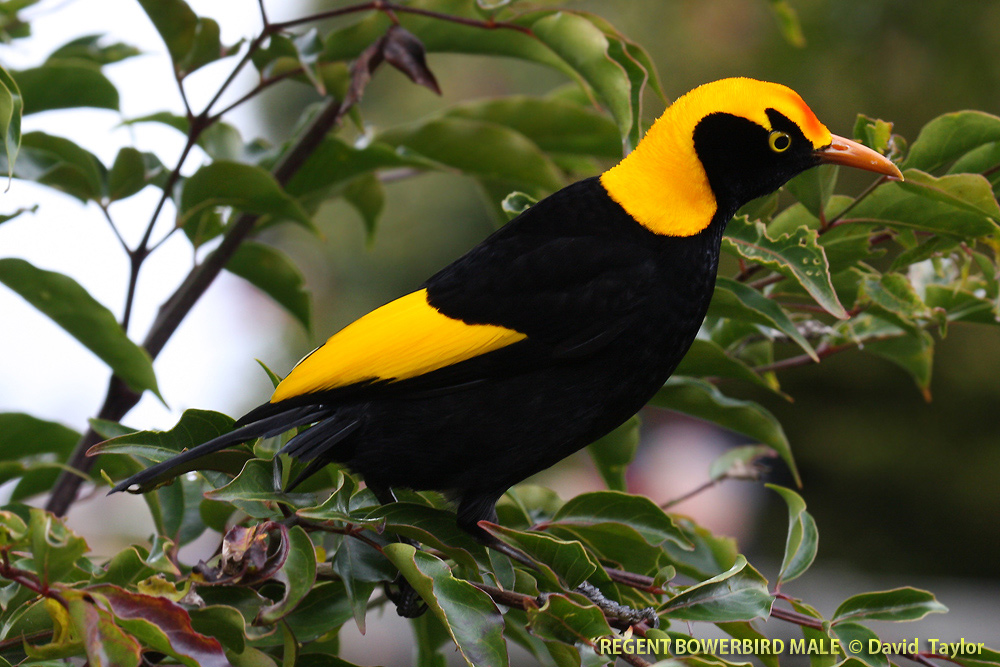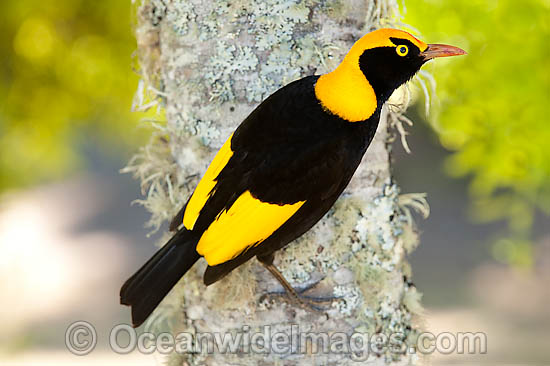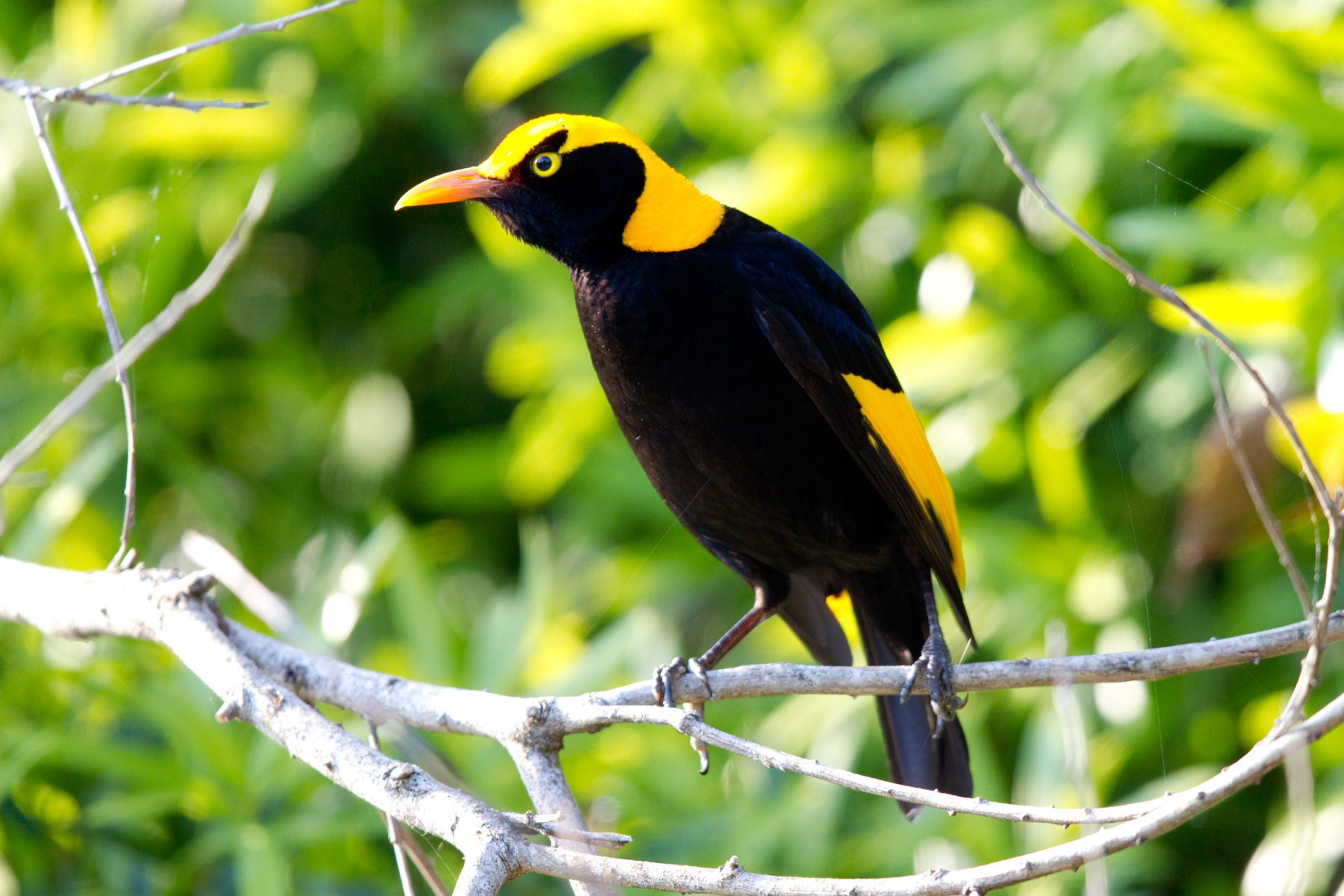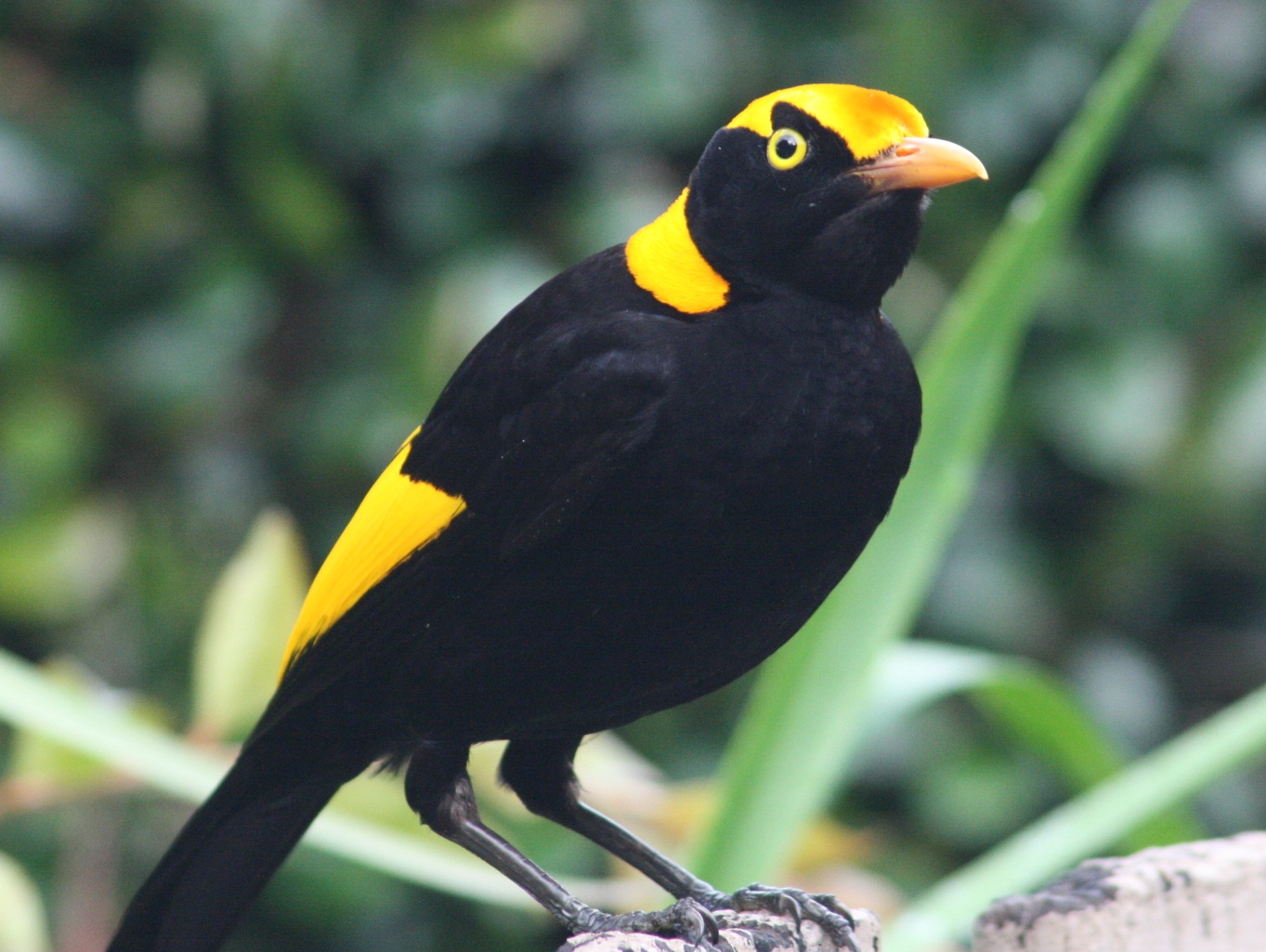
Sericulus chrysocephalus
TAXONOMY
Sericulus chrysocephalus Lewin, 1808, Patterson’s River = Hunter
River, New South Wales, Australia.
OTHER COMMON NAMES
English: Regent bird, Australian regent bowerbird, king honey
sucker, golden regent; French: Jardinier prince-rйgent; German:
Gelbnacken-Laubenvogel; Spanish: Capulinero Governador.
PHYSICAL CHARACTERISTICS
9.8 in (25 cm); female 0.20–0.30 lb (91–138 g), male 0.17–0.24
lb (76–110 g). Black with bright yellow flight feathers and area
from forehead to shoulder; orange-red band from forehead to
nape. Eyes are bright yellow.
DISTRIBUTION
Subtropical coastal zone of central eastern Australia from immediately
north of Sydney to the Connors and Clarke Ranges,
Eungella Plateau, inland of Mackay, Queensland, with a gap
in
DISTRIBUTION
around the Fitzroy River valley inland of Rockhampton.
From sea level to 2,950 ft (900 m), but altitude
varies across the range.
HABITAT
Subtropical rainforest, adjacent woodland, and, in winter, more
open habitats, including cultivated country and urban gardens.
BEHAVIOR
Males build bowers to attract females. The sparse and small
avenue bower is well concealed beneath low dense vines/foliage.
Traditional bower sites are dispersed through appropriate
ridge top habitat. Bowers discovered by rivals are
destroyed, if not by a rival then by the owner. Another bower
is then built at a nearby location. Bower structures last an average
of 10 days or less. Decorations include green leaves,
flowers, fruits, snail shells, and cicada ectoskeletons. Seasonal
bower attendance mostly September through January on
Sarabah Range but from July through August elsewhere. Adult
males vocalize by producing harsh grating sounds; when courting
they emit a soft complex subsong.
FEEDING ECOLOGY AND DIET
Omnivorous but predominantly frugivorous. Also eats flowers,
nectar, and animals. Females dominate males at feeding trees.
REPRODUCTIVE BIOLOGY
Polygynous, with promiscuous adult males and exclusively female
nest attendance. Breeding occurs September through
February. Egg laying peaks in November and December. Typically
builds relatively frail open cup nest among clumps of
vines or mistletoe 6.6–102 ft (2–31 m) above ground. Nests are
made of a frail shallow saucer of loose sticks and an egg-cup
lining of finer twigs with a few leaves. One to three colored
and vermiculated eggs are laid. Incubation in captivity lasted
17–21 days and nestling period at one nest was 17 days.
CONSERVATION STATUS
Not threatened. Common and widespread throughout limited
remaining but mostly protected habitat. In some areas numbers
are reported as greatly reduced to uncommon because of habitat
destruction and degradation.
SIGNIFICANCE TO HUMANS
Adult males were once systematically hunted for mounting as
decorative novelties commonly included in cabinets of stuffed
birds. They are also a popular cage bird, both within and outside
Australia. Birds may be pests to cultivated fruit crops.
Other popular Animals
Photo Gallery of - Regent bowerbird




 Animalia Life
Animalia Life